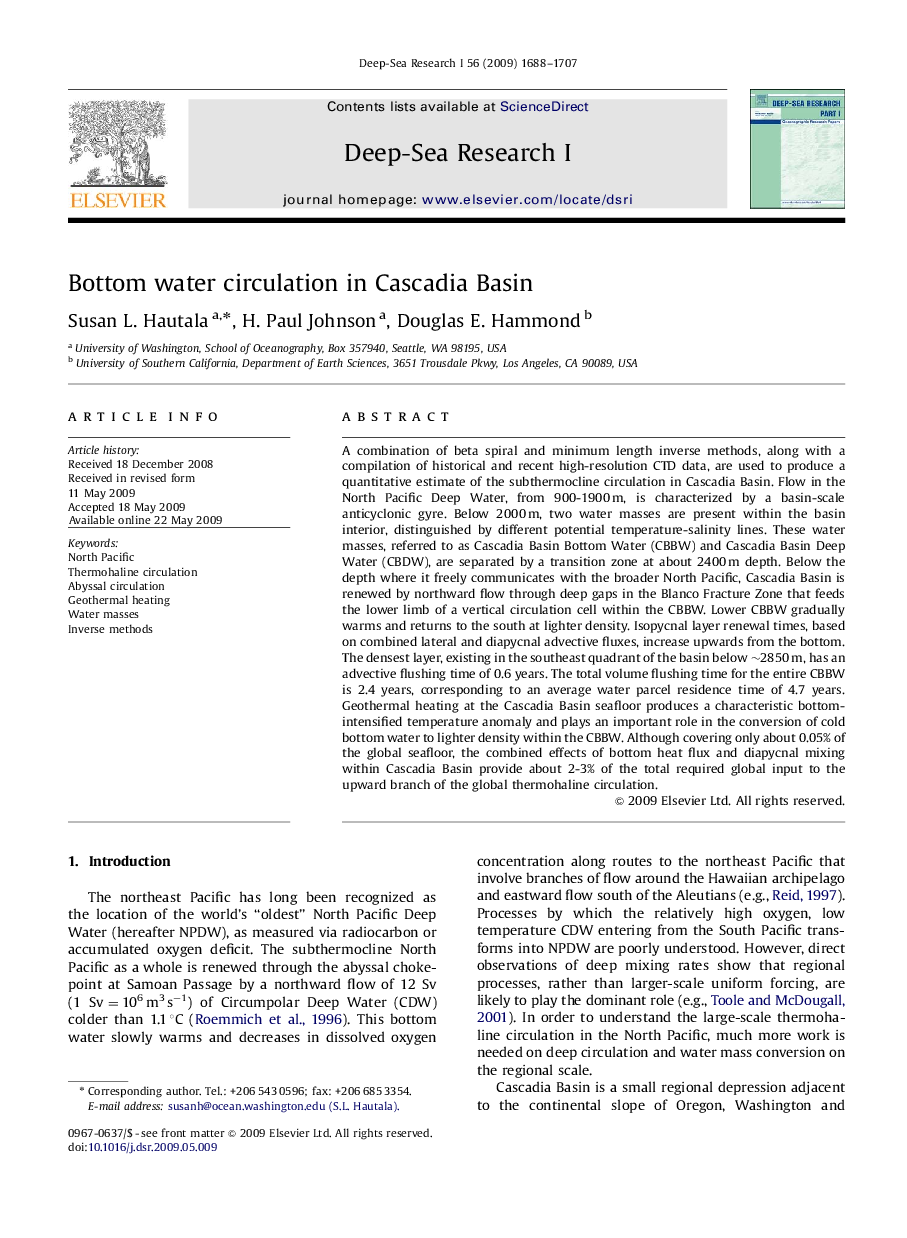| کد مقاله | کد نشریه | سال انتشار | مقاله انگلیسی | نسخه تمام متن |
|---|---|---|---|---|
| 4535196 | 1326090 | 2009 | 20 صفحه PDF | دانلود رایگان |

A combination of beta spiral and minimum length inverse methods, along with a compilation of historical and recent high-resolution CTD data, are used to produce a quantitative estimate of the subthermocline circulation in Cascadia Basin. Flow in the North Pacific Deep Water, from 900-1900 m, is characterized by a basin-scale anticyclonic gyre. Below 2000 m, two water masses are present within the basin interior, distinguished by different potential temperature-salinity lines. These water masses, referred to as Cascadia Basin Bottom Water (CBBW) and Cascadia Basin Deep Water (CBDW), are separated by a transition zone at about 2400 m depth. Below the depth where it freely communicates with the broader North Pacific, Cascadia Basin is renewed by northward flow through deep gaps in the Blanco Fracture Zone that feeds the lower limb of a vertical circulation cell within the CBBW. Lower CBBW gradually warms and returns to the south at lighter density. Isopycnal layer renewal times, based on combined lateral and diapycnal advective fluxes, increase upwards from the bottom. The densest layer, existing in the southeast quadrant of the basin below ∼2850 m, has an advective flushing time of 0.6 years. The total volume flushing time for the entire CBBW is 2.4 years, corresponding to an average water parcel residence time of 4.7 years. Geothermal heating at the Cascadia Basin seafloor produces a characteristic bottom-intensified temperature anomaly and plays an important role in the conversion of cold bottom water to lighter density within the CBBW. Although covering only about 0.05% of the global seafloor, the combined effects of bottom heat flux and diapycnal mixing within Cascadia Basin provide about 2-3% of the total required global input to the upward branch of the global thermohaline circulation.
Journal: Deep Sea Research Part I: Oceanographic Research Papers - Volume 56, Issue 10, October 2009, Pages 1688–1707